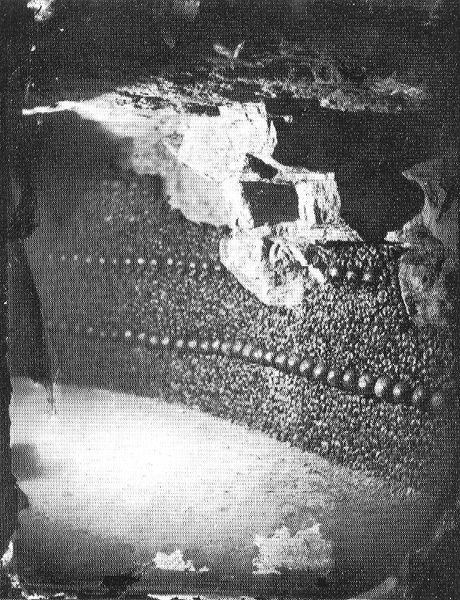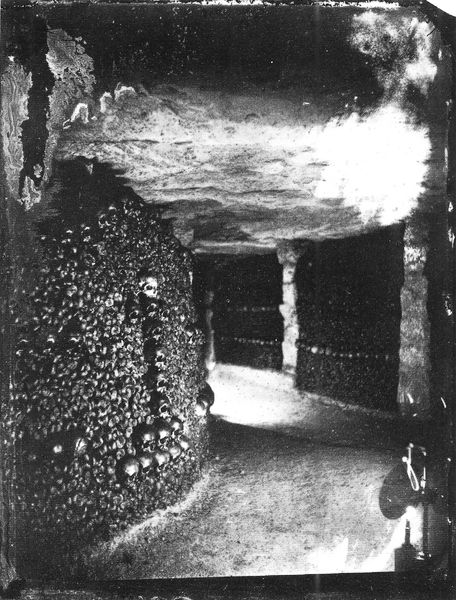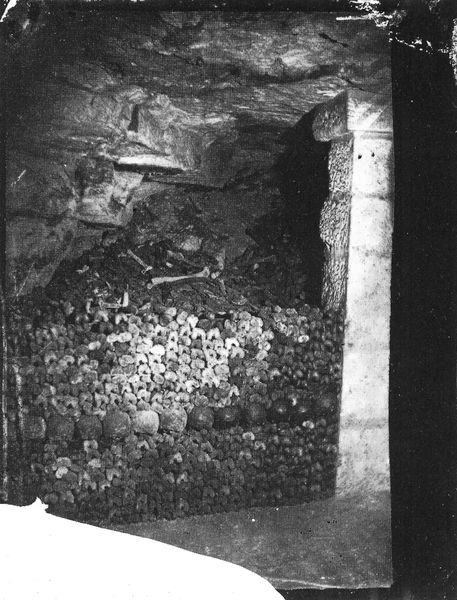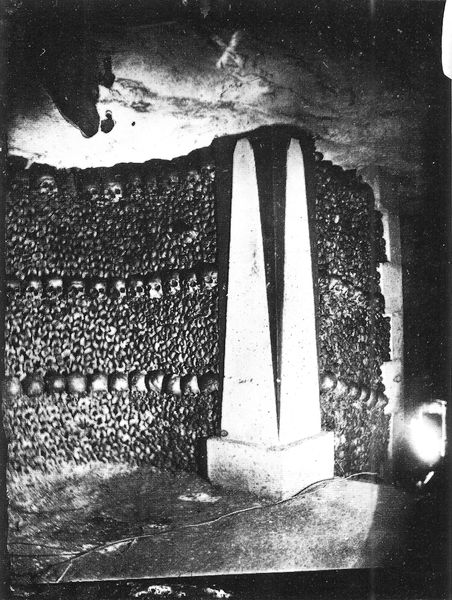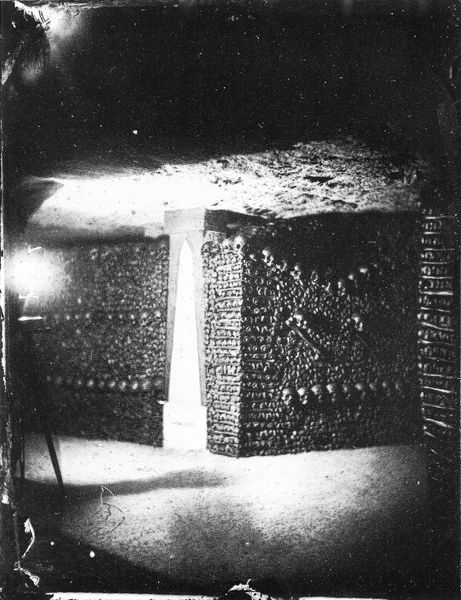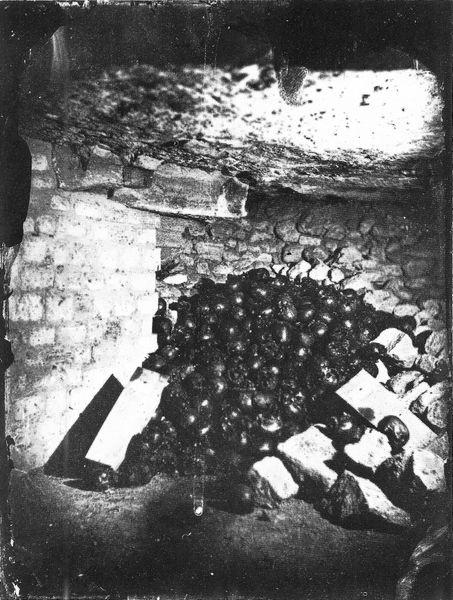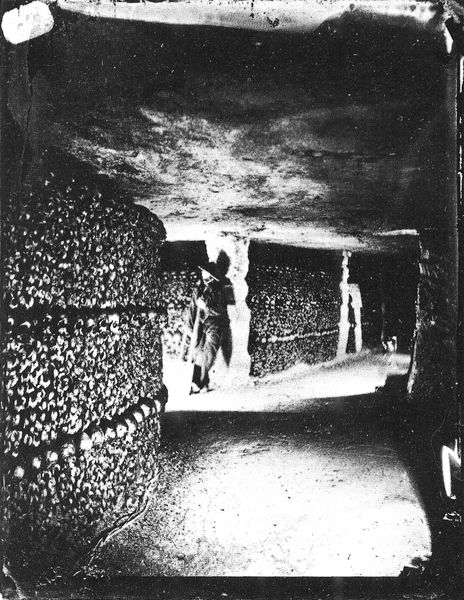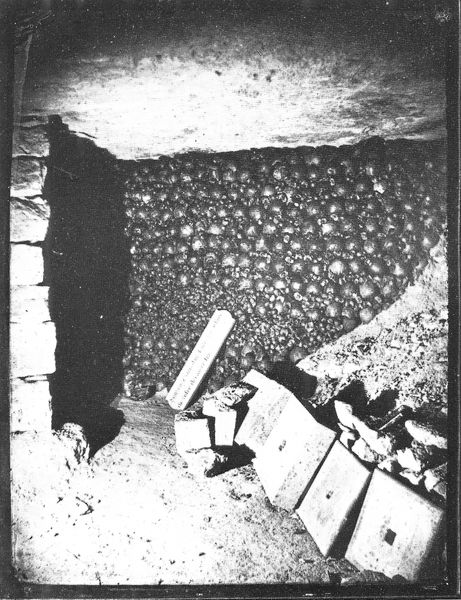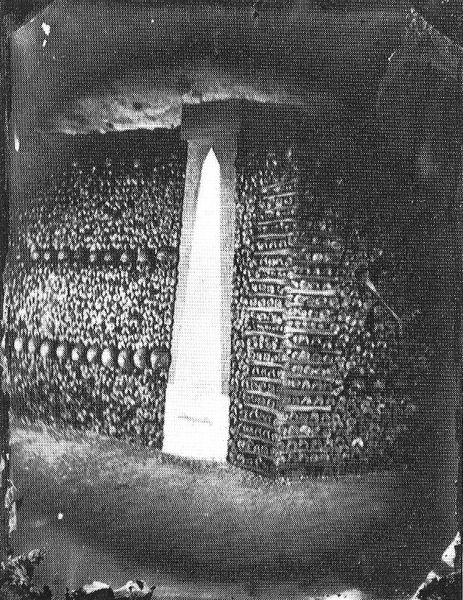
photography, gelatin-silver-print
#
landscape
#
photography
#
gelatin-silver-print
#
history-painting
Copyright: Public domain
Curator: What a stark image! It’s so dominated by the contrast between light and shadow that one barely knows where to look first. Editor: Agreed. Today, we're observing "Catacombes De Paris", a gelatin-silver print by Felix Nadar, dating back to 1861. Nadar, a true pioneer, captured this eerie scene using artificial light—quite a feat for the time, wouldn’t you say? Curator: Absolutely, considering the technical constraints of 19th-century photography. To venture into the Parisian catacombs required logistical support, and one has to consider the workers who made such images possible—digging tunnels, moving bones. Also the social context - moving remains was a way to relieve the overcrowded cemeteries above. It also makes one think of mortality, and the labor that both conceals and reveals its physical reality. Editor: True, and focusing on the aesthetic level, it is undeniable Nadar’s skill. Notice how the skulls and bones seem to cascade from the center, composing almost a sculptural, monumental form. It really commands attention by the sheer scale of death displayed. The tonality in the print further enhances the macabre effect. Curator: Yes, it prompts questions about representation—what does it mean to create and consume images of human remains? Nadar had to go deep down and then come back to make this visual narrative - how it changes our perceptions when labor is translated in a visual format like this. I’d be curious to know more about who commissioned this work. Editor: An insightful perspective! The choice to flatten such sensitive depth into monochrome print offers the image a universal feel as memento mori, even within its documentary context. Curator: In this way, it almost serves as a meditation on collective identity. Even though photography has always had that tie with reality and historical records, the symbolic force of such stark presentation makes the work quite lasting. Editor: Nadar definitely created an iconic work—a dance with death itself—frozen in silver gelatin! Curator: Precisely! This opens my view to consider how documentation interacts and informs not just what we think we know, but how this image becomes the known!
Comments
No comments
Be the first to comment and join the conversation on the ultimate creative platform.


